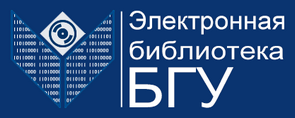Please use this identifier to cite or link to this item:
https://elib.bsu.by/handle/123456789/274384| Title: | Formation of holographic diffraction gratings in thin films of chalcogenide glassy semiconductors |
| Other Titles: | Формирование голографических дифракционных решеток в тонких пленках халькогенидных стеклообразных полупроводников / А. М. Настас, М. С. Иову, И. Н. Агишев, И. В. Гаврусенок, Е. А. Мельникова, И. В. Сташкевич, А. Л. Толстик |
| Authors: | Nastas, A. M. Iovu, M. S. Agishev, I. N. Gavrusenok, I. V. Melnikova, E. A. Stashkevitch, I. V. Tolstik, A. L. |
| Keywords: | ЭБ БГУ::ЕСТЕСТВЕННЫЕ И ТОЧНЫЕ НАУКИ::Физика |
| Issue Date: | 2021 |
| Publisher: | Минск : БГУ |
| Citation: | Журнал Белорусского государственного университета. Физика = Journal of the Belarusian State University. Physics. - 2021. - № 3. - С. 4-11 |
| Abstract: | The paper presents a study of the formation of holographic diffraction gratings in thin films of chalcogenide glassy semiconductors. The recording process of holographic gratings at the argon-laser radiation wave length 488 nm and the process of chemical etching that enables the formation of а relief holographic grating are analysed. The optimum conditions for the formation of diffraction gratings in films of arsenic sulfide As2S3 are defined. It is shown that at the 488 nm wave length of an argon laser the optimum exposure comes to ∼5–8 J/cm2. At the recording stage a quasi-phase (relief-phase) grating is formed, with the diffraction efficiency on the order of a few per cent. Etching of the exposed sample with a solution of NaOH alkali in deionised water and isopropanol makes it possible to increase considerably the relief depth and to improve the diffraction efficiency of a thin diffraction grating approximately up to 20 % for the red spectral region, and to approach the maximal value ∼34 % for the near infra-red region. The results of the study considered look promising for the creation of relief holographic gratings which are essential in present-day optical instrument building (production of spectral devices, holographic sights, and the like). |
| Abstract (in another language): | Исследовано формирование голографических дифракционных решеток в тонких пленках халькогенидных стеклообразных полупроводников. Проанализирован процесс записи голографических решеток на длине волны излучения аргонового лазера 488 нм, а также процесс химического травления, позволяющий создать рельефную голографическую решетку. Определены оптимальные условия формирования дифракционных решеток в пленках сульфида мышьяка. Показано, что на длине волны аргонового лазера 488 нм оптимальная экспозиция составила ∼5–8 Дж/см2. На стадии записи образуется квазифазовая (рельефно-фазовая) решетка с дифракционной эффективностью на уровне единиц процентов. Травление экспонированного образца раствором щелочи NaOH в деионизированной воде и изопропаноле позволило существенно увеличить глубину рельефа и повысить дифракционную эффективность тонкой рельефной решетки примерно до 20 % для красной области спектра и приблизиться к максимальному значению (∼ 34 %) для ближней инфракрасной области. Результаты исследования перспективны для создания рельефных голографических решеток в сфере оптического приборостроения (спектральное оборудование, голографические прицелы и др.). |
| URI: | https://elib.bsu.by/handle/123456789/274384 |
| ISSN: | 2520-2243 |
| DOI: | 10.33581/2520-2243-2021-3-4-11 |
| Licence: | info:eu-repo/semantics/openAccess |
| Appears in Collections: | 2021, №3 |
Items in DSpace are protected by copyright, with all rights reserved, unless otherwise indicated.

